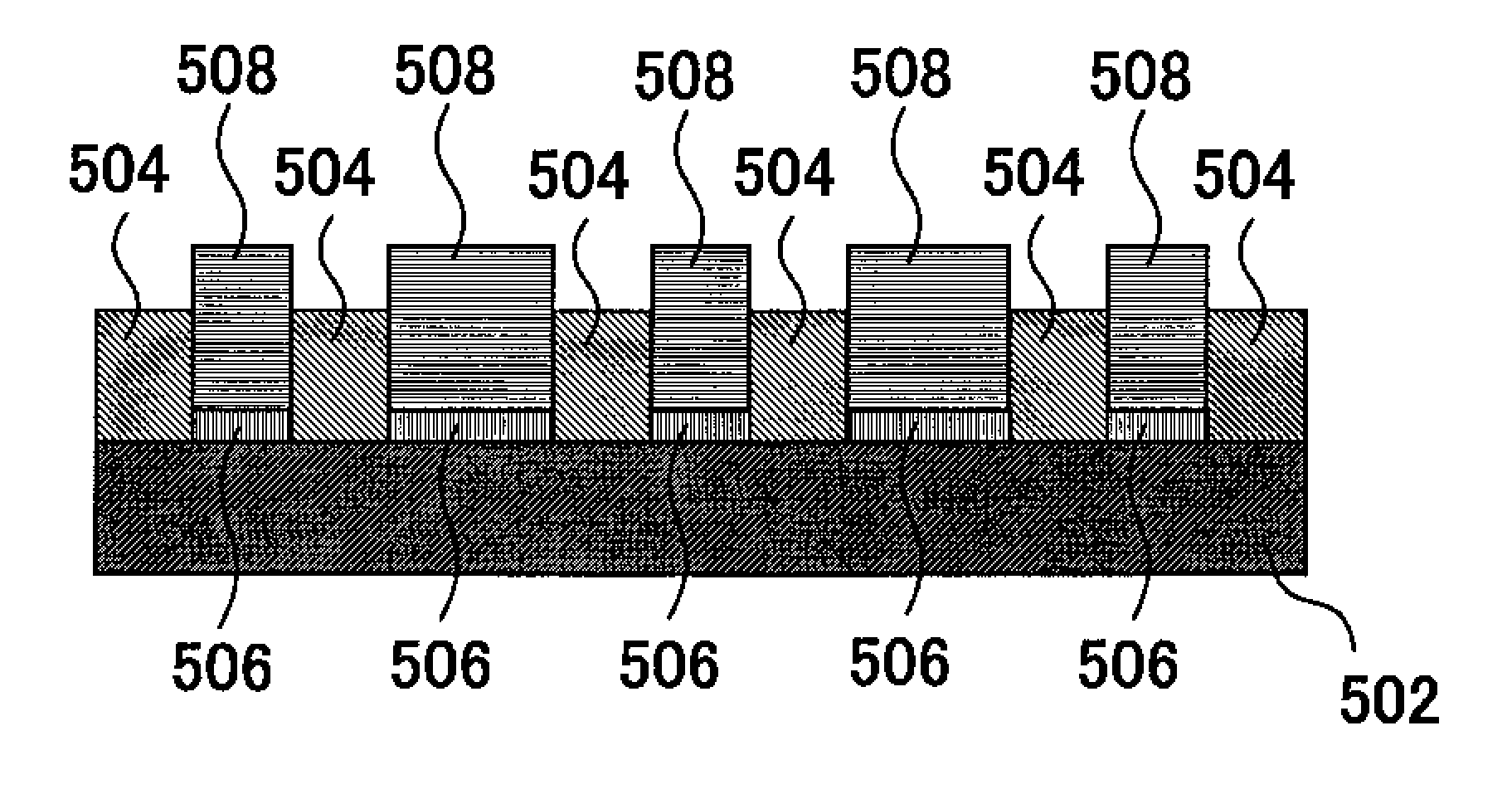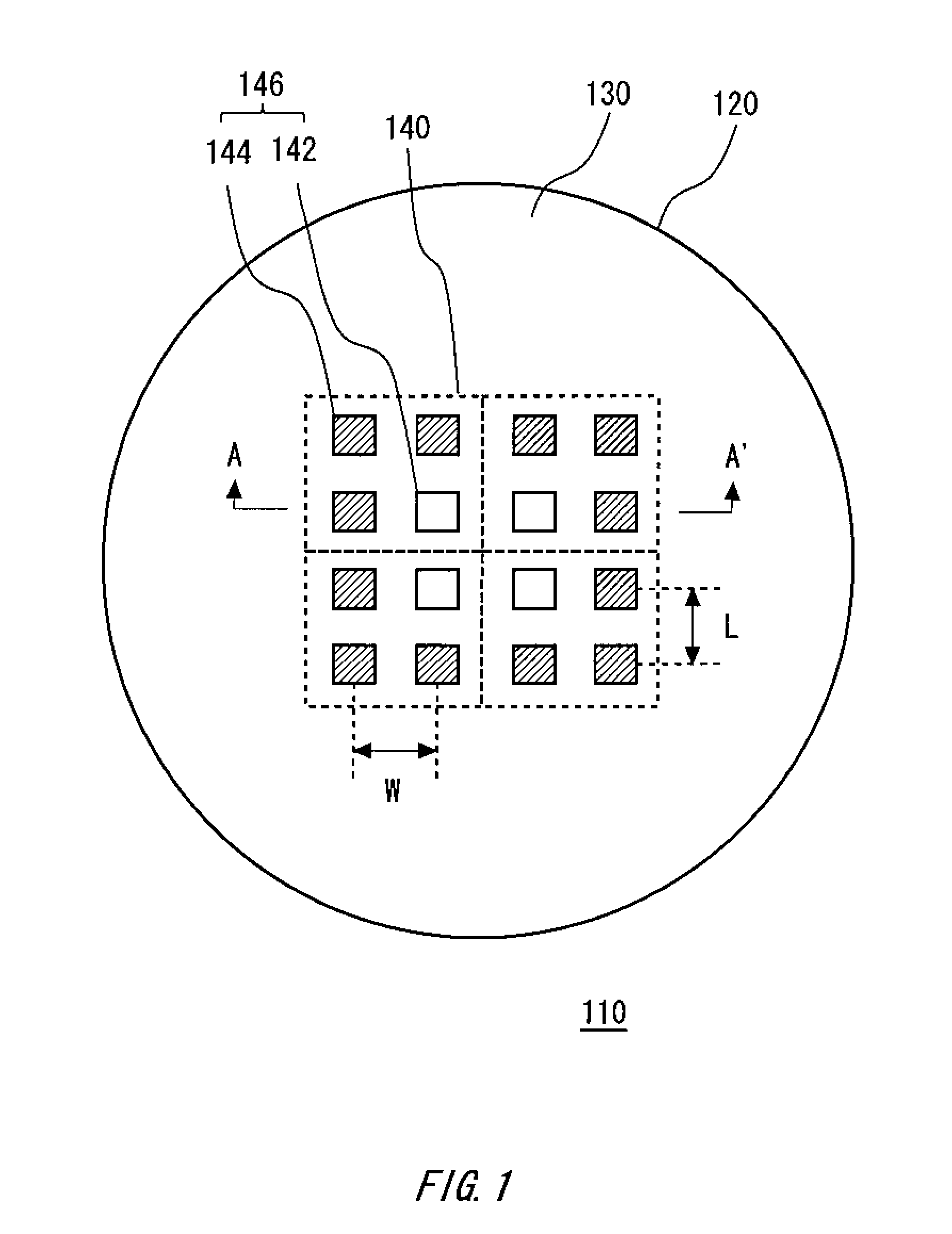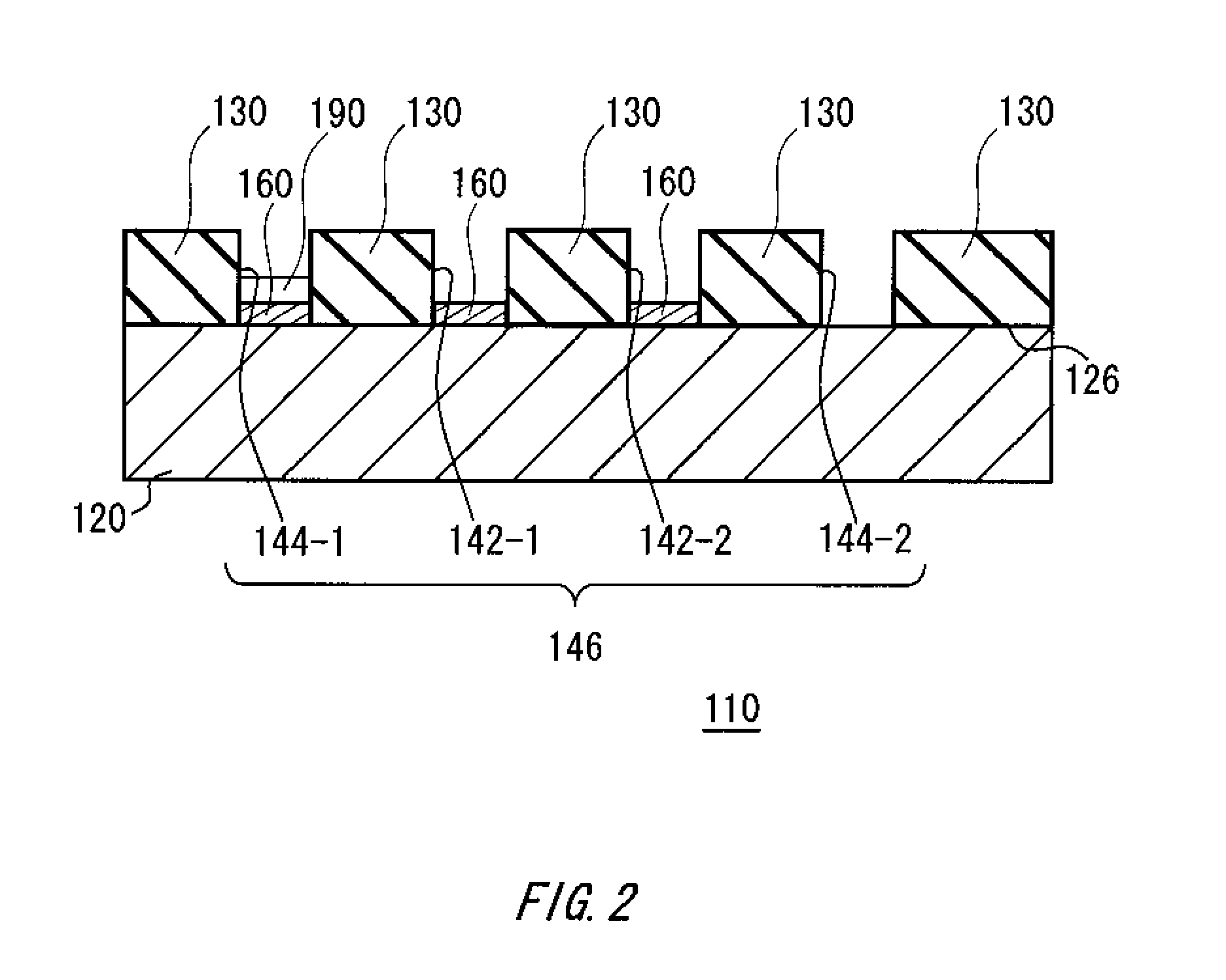Semiconductor wafer, method of producing semiconductor wafer, electronic device, and method of producing electronic device
- Summary
- Abstract
- Description
- Claims
- Application Information
AI Technical Summary
Benefits of technology
Problems solved by technology
Method used
Image
Examples
embodiment examples
Embodiment Example No. 1
[0161]According to the procedures shown in FIG. 5 to FIG. 10, an electronic device 400 has been produced. A commercially-available SOI wafer was prepared as a base wafer 420. As an inhibition layer 430, a silicon oxide layer was prepared by CVD. The thickness of the silicon oxide layer was 1 μm. A plurality of openings were formed by photolithography. The plurality of openings were formed at constant intervals in both of the two directions orthogonal to each other, and have the same plane shape. The openings, each being a square whose a side has a length of 10 μm in the plan view, were arranged in a constant pitch of 30 μm therebetween. Since a side of the opening is 10 μm, the interval between two neighboring openings is 20 μm. The opening was designed to have a thickness of a seed crystal of 0.5 μm and a thickness of GaAs of 3 μm.
[0162]The seed crystal of Ge was formed inside the opening. The seed crystal of Ge was formed by CVD using halogen. The seed cry...
embodiment example no.2
Embodiment Example No. 2
[0166]According to the procedures shown in FIG. 5 to FIG. 8, crystal growth was conducted. A commercially-available Si wafer was prepared as a base wafer 420. As an inhibition layer 430, a silicon oxide layer was formed by a thermal oxidation method. The thickness of the silicon oxide layer was 1 μm. A plurality of openings were formed through the silicon oxide layer by photolithography. The plurality of openings having the same plane shape were formed at constant intervals. The openings, each being a square whose one side has a length of 10 μm in the plan view, were arranged in a constant pitch of 30 μm therebetween. In other words, the openings were formed at each distance of 30 μm. The Ge crystal was grown as a seed crystal to the thickness of 1 μm in the openings, and then was subjected to annealing. Thereafter, the GaAs crystal was grown.
[0167]A laser microscope was used to measure the crystal growth thickness in the center of each opening in the group o...
embodiment example no.3
Embodiment Example No. 3
[0169]According to the procedures shown in FIG. 12A to FIG. 12D, an HBT was produced as an electronic device 500. A commercially-available Si wafer was prepared as a base wafer 502. As an inhibition layer 504, a silicon oxide layer was formed by a thermal oxidation method. The thickness of the silicon oxide layer was 1 μm. A plurality of isolated inhibition layers 504 were formed by photolithography. At the same time, openings A were provided through the inhibition layers 504. The plane shape of the inhibition layer 504 was a square having a side of 40 μm, and an opening A is provided in the center of the inhibition layer 504. The plane shape of the opening A was a square having a side of 20 μm. The inhibition layers 504 were formed at the constant interval of 50 μm pitch. Since a side of the inhibition layer 504 is 40 μm, a groove B was formed between two neighboring inhibition layers 504. The width of the groove B was 10 μm. The opening A was designed such ...
PUM
 Login to view more
Login to view more Abstract
Description
Claims
Application Information
 Login to view more
Login to view more - R&D Engineer
- R&D Manager
- IP Professional
- Industry Leading Data Capabilities
- Powerful AI technology
- Patent DNA Extraction
Browse by: Latest US Patents, China's latest patents, Technical Efficacy Thesaurus, Application Domain, Technology Topic.
© 2024 PatSnap. All rights reserved.Legal|Privacy policy|Modern Slavery Act Transparency Statement|Sitemap



